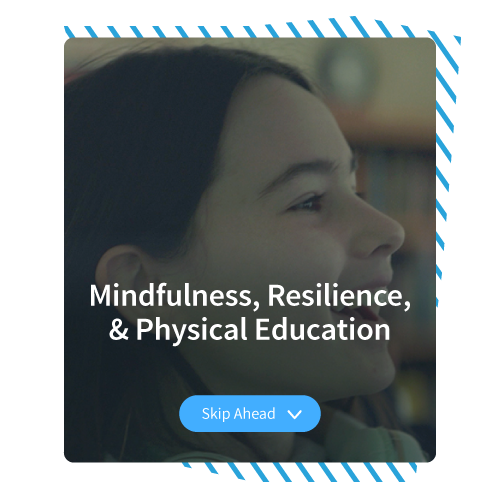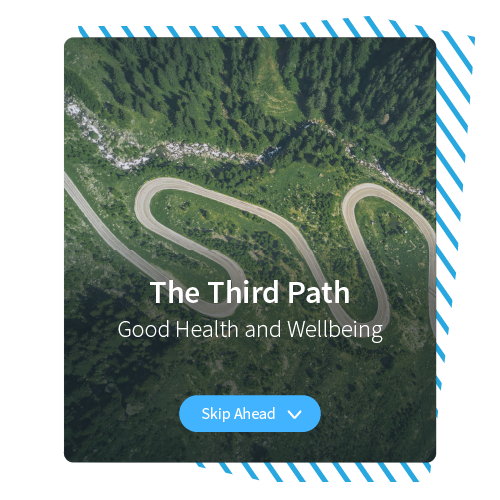Sustainable Development Goals - Health & Wellbeing
Whether you’re looking at health and well-being from the perspective of social studies, physical education, current events, or just social & emotional learning in general, it’s a topic that all students can relate to.
Here I’m going to look at a couple of different approaches you could take with this topic, using different Edwin resources: First, a social studies approach, using the UN Sustainable Development Goals (SDGs). Then, we’ll look at some options more oriented to health and physical education. Last but not least, we’ll look at some professional resources that could help improve YOUR well-being (yes, it’s ok to jump right there).
SDG 3: Good Health and Wellbeing
The UN’s third SDG is about improving health and wellbeing globally. This Collection gives an excellent overview of some of the critical issues that we as a global community must face. It’s also an excellent resource to cover any of the social studies (or geographic) thinking concepts.
The first resource in the Collection follows the pattern of other Collections on the SDGs. One feature I like about these is the “effective response” options that are presented both at the beginning and end. These help to set the expectation that these issues require action, which is what the SDGs are all about: inspiring action.
The video gives a good summary of how we measure health, but you may want to front-load some vocabulary to prep students, like “life expectancy,” “mortality” and “communicable/non-communicable.”
The pie chart on the World Health Organization’s program budget gives a great chance to work with data and dive deeper into global health issues. You could prompt student investigations with questions like:
How much of the budget is dedicated just to emergencies? (32.9%, or almost a third).
Why do you think this is the largest budget area?
Why might polio be the only disease that has its own category?
The next resource in the Collection is “What Factors Affect the Health of People Worldwide?” This pairs really well with the first one, and gives more opportunities to get familiar with global health issues, the role of the WHO, and specific health issues like polio and diabetes.
The rest of the resources in this Collection provide a wide range of views on health and well-being, looking at social and cultural factors from international and First Nations perspectives. There are great connections to Patterns and Trends, Significance, and Perspective, which makes this a fabulous resource for exploring thinking concepts.
Mindfulness, Resilience, and Physical Health
For a closer to home take on health and well-being, there are a few other Collections in the Edwin Library worth checking out.
First, a series on mindfulness, which is a nice, easy way to get into the topic of mental and emotional health. (I’m not saying this is the only reason to explore mindfulness, but it’s also a great method for helping a highly active class or student get to a calmer state.) There are three mindfulness collections: Focus, Ongoing Monitoring, and Attitude. They’re built for you to browse and choose what you want to share with students. There are helpful elements such as suggestions on how to set up a classroom to support mindfulness, and making it part of classroom routines, plus slides and videos for guided meditations that you can use with your whole class.
I am always surprised at how eager kids are to participate in mindfulness activities. Have fun trying these out with your class!
For a bit of a different take on health and well-being that fits the health and physical education curriculum, the Whole Me! series of Collections covers a range of topics here, from nutrition to cardio and core strength, to managing stress and device usage. Each one has short videos and activities that are perfect for connecting health curriculum and daily physical activity. To see the entire series, just type “whole me” (in quotes) in the search bar
In short: crazy class? Try the mindfulness Collections!
Lazy class? Try the Whole Me workouts!
Or if you’d prefer to integrate well-being conversations into Language Arts, there’s a great video Collection on resilience that explores this topic from the perspective of fixed vs growth mindsets. There are a TON of great videos in this Collection, and far too many to cover all together, so I’d recommend one of the following approaches:
Watch the TED Ed talk on fixed and growth mindsets as a class. I’d recommend this no matter what… it’s a good foundation to understand how resilience is a skill that can be learned and applied, not just a quality people have or don’t have. Then, you could…
Pick the videos you want to share with students based on your Language / ELA focus (there are connections to text pattern/genre, media literacy, and oral communication), and just share or assign those. You could add the videos you want to a new Collection, or just delete the videos you don’t want, and then share it.
OR
Share the entire Collection with your students, and then ask them to browse the titles and descriptions of each video to find ones that they connect with.
The Third Path Framework
I won’t be able to do justice to the entire Third Path series of Collections here, but my strong recommendation is just to check out the introduction to see what it’s all about.
This is a powerful framework that goes well beyond the classroom to delve into relationships in all aspects of our lives. I truly believe I am a better parent after trying to apply just some of the basic concepts Dr. Tranter introduces with my own kids.
Some of the key messages that this resource helps to clarify:
Well-being is not something to be taught like math or spelling. It’s something that is built through how we relate to each other.
Wellbeing and achievement are not two separate areas we can focus on as educators—they are mutually reinforcing.
There isn’t really a set of learning strategies you can use to make wellbeing happen… YOU are the strategy.
This might be the perfect thing to dive into as the school year wraps up and you’re mending your frayed nerves, because one point Dr. Tranter and his co-authors drive home is that you can’t have classroom wellbeing without first focusing on your own wellbeing!
To learn more about the Third Path outside Edwin, check out http://www.thirdpath.ca/ and https://www.relationshipbasedschools.com/
Try it!
You know your class, and yourself, best… so hopefully some of these options will help you bring greater health and well-being into your lives. Especially given what we’re all up against right now, there’s no better time to put health and well-being at the centre of our attention.
Explore more:
If you like the idea of using the SDGs in your classes, check out teachsdgs.org and #teachsdgs on Twitter.
Inside Edwin you will find amazing Collections for all 17 UN SDG Goals. Click the icons below to see for yourself:

























